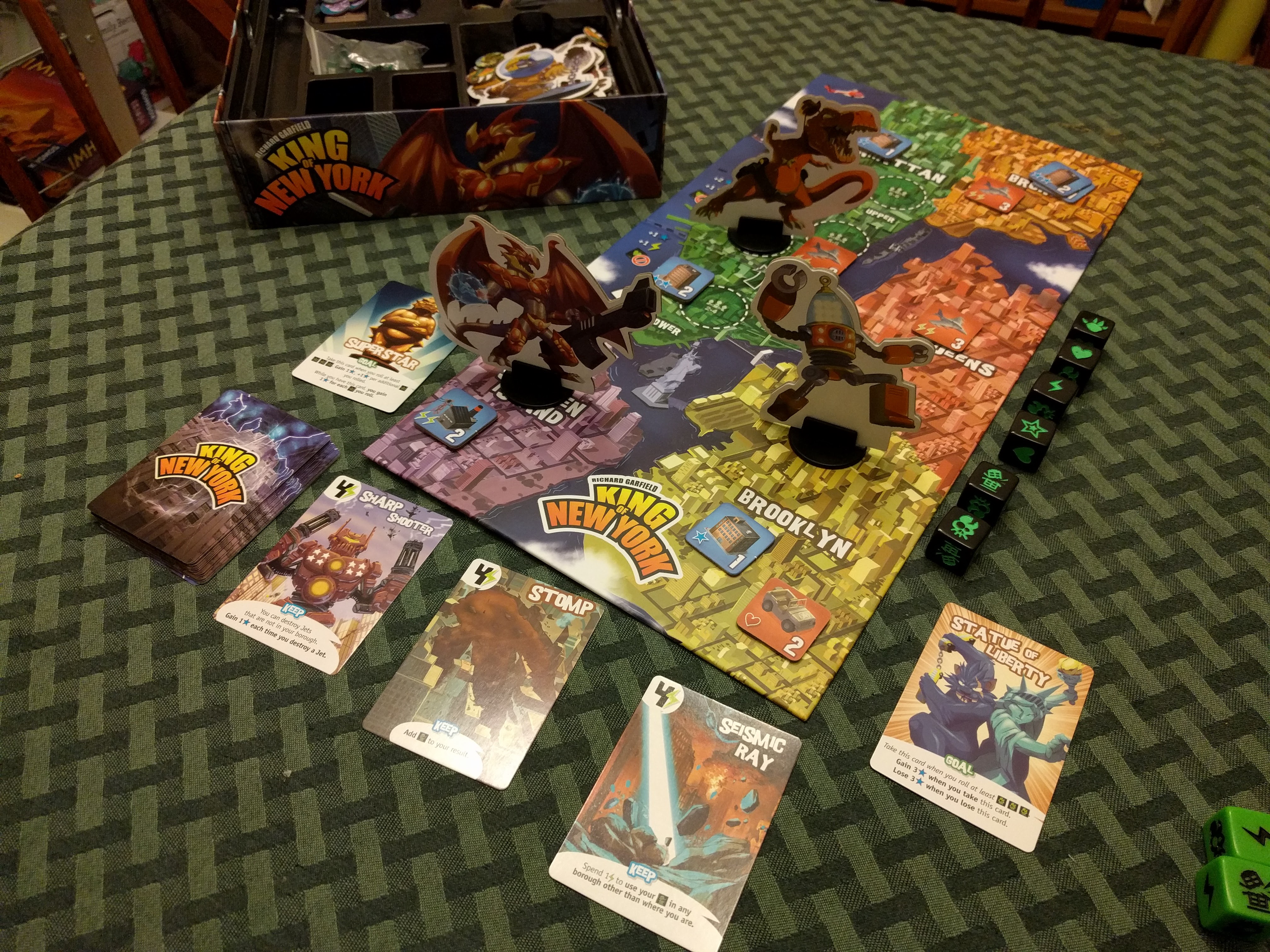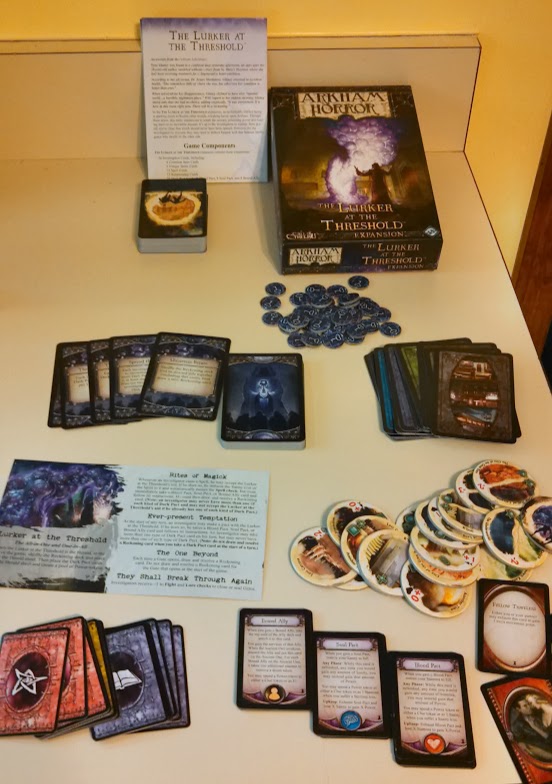Designer: Klaus-Jürgen Wrede
Artists: Oliver Freudenreich and Marco Morte
Publisher: Hans im Glück/Rio Grande Games
Players: 2-4
Playing time: 45 minutes
Age range: 10+

(Image courtesy of blakstar@BoardGameGeek)
In 2004, Klaus-Jürgen Wrede created another standalone game in the Carcassonne universe, this time called Carcassonne: The City. As you might expect, this time the theme is building a single walled city, rather than multiple cities and surrounding countryside.
The overall rules for Carcassonne: The City are again very similar to the original game (see yesterday’s post for a more detailed overview): place tiles, place meeples on features (if not already controlled), score and remove them for completed features and and score any remaining meeples at the end of the game. Components are simple and again mostly familiar: each player starts with 8 meeples and 3 towers, and there are shared piles of city tiles and wall segments.
The features in the city are familiar, yet different. Markets, designated by a green area on a tile, are similar to the cities in the original game. One difference is that you don’t need to match the edges of markets exactly — you can put a side with a market up against a side with a residential area. The second difference is that each market area has a colored good in it: the more different kinds of goods in the market, the greater score you get (there’s a similar mechanic in the Traders and Builders expansion, but these goods are printed on the tiles).
Streets wind through the residential areas, and any tile with a street on it must match a street on any tile it’s placed next to. Streets of length 1-3 tiles are 1 point per tile like the original game; streets longer than that get 2 points per tile.
The final feature on the tiles are residential areas (marked as brown areas), which act like farms in the original game, and score 2 points for every market (completed or not) adjacent to them at the end.
And then there are the walls. The game has three stages, controlled by breaking the tile set into three piles. Once the first pile is used up, the first player who completes a controlled feature (i.e. so it scores) after that point gets to place the city gate. Then all the other players in turn go around and place a wall segment, extending the city wall in either direction. At this time players can also place a meeple on top of their wall segment to act as a guard, as long as there isn’t another meeple on an opposite wall. Once all the walls are placed, the player who completed the feature now has the choice whether to add a tower. This will score 1 point for every wall segment up to the next tower or the city gate. This will happen every time a feature is scored until the second pile of tiles is used up, after which any placed tile that leads to a score will allow the placement of 2 wall segments by each player.
The game ends when you run out of tiles, or out of wall segments, or the ends of the wall are close enough together. At this point you score the residential areas. In addition, each guard scores points for each grey building in a line from its wall — unnamed ones are 1 point and named ones are 2 points. Again, the player with the most points wins.
Once again, just by tweaking a few rules, Wrede has a created a completely different feel for his signature game. The guards may be a borrowed mechanic from Knizia’s Carcassonne: The Castle (it’s unclear as they’re both listed as designers) — but whereas in The Castle they didn’t quite work, here they just feel right. By allowing the market edges to not have to match, you get a more compact board, which allows the walls a chance to surround it. And this one ends up being more of a brain-burner as well — do you place the tile that allows another player to score, so you have the opportunity to place the first wall and hence a tower, or do you try to improve the scoring potential for your guards? Or do you add that extra good that gives your big market just a little more value? Lots of tough decisions, and a lot more long-term strategy than the original game.
If that’s not enough, the real reason to get this (and the main reason I bought it when it first came out) is just because it’s just so darn pretty. In the original printing, the tiles are made of thick foamboard instead of cardboard, the walls and towers are nice wooden pieces, and the gameboard when you’re done really looks like a miniature walled city. And the whole thing comes in a big wooden box which looks great on the shelf. Even if you can’t find the original version, my understanding is that while you lose the foamboard and the wooden box, you do get the wooden wall pieces and towers, so it still looks pretty sweet on the table.
I can’t recommend Carcassonne: The City enough — it addresses many of the issues with the original game, adds some new elements that provide new challenges, and is absolutely gorgeous to boot. . It is, unfortunately, out of print (which I suppose makes it a Vintage Game), but you can find copies of it on eBay and BoardGameGeek for reasonable prices. It’s well worth tracking down.
Verdict: Buy.
 (Prepared to defend myself from my Day Four avatar)
(Prepared to defend myself from my Day Four avatar) (Some days you just feel the need to toss a barrel at a mustachioed hero)
(Some days you just feel the need to toss a barrel at a mustachioed hero)









